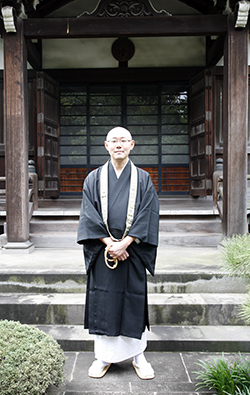
Ryoyu Miyabe, the chief priest of Kanshoin
We talked with Ryoyu Miyabe, the chief priest of Kanshoin. This interview was conducted in October 2015.
Q: When was Kanshoin founded?
Miyabe: Kanshoin was founded in 1627 as a shrine temple of Ueno Toshogu Shrine that enshrines Ieyasu Tokugawa.
Q: Under what circumstances was Kanshoin moved to the present location?
Kanshoin was originally located in an area next to Ueno Toshogu, which was somewhere in the present-day Ueno Zoo. However, many buildings of Kan-eiji Temple were burnt down during the Battle of Ueno (Boshin Civil War) in 1868. Although Shokanin was rebuilt in an area behind Kan-eiji Temple in 1888, it was burnt down again during the Second World War. After that, it was moved to the present location. Since it was burnt down twice, many historic materials were destroyed. (continued in the lower column)
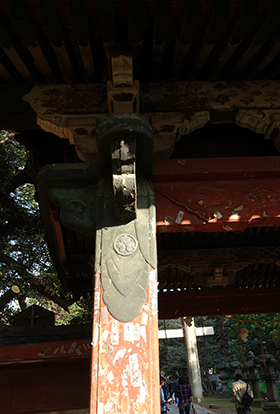
Ueno Toshogu (in Ueno Park)
Q: Is Kanshoin now related to Ueno Toshogu as its shrine temple?
The Meiji Government attempted to make Shintoism a state religion in order to restore imperial rule, banned the long-time custom of syncretic fusion of Shintoism and Buddhism, and issued the Edict for Separation of Shintoism and Buddhism. Because of this, Kanshoin's relationship with Ueno Toshogu was broken off. Gojotenjin Shrine in Ueno Park and Asakusa Shrine located in the precincts of Senso-ji Temple also practiced the syncretic fusion of Shintoism and Buddhism.
Q: Under what circumstances did Takatora Todo found Kanshoin as a shrine temple of Ueno Toshogu?
When Ueno Toshogu in which Ieyasu Tokugawa would be enshrined was built, Takatora surrendered a secondary dwelling of the Todo family, and built Kanshoin as a shrine temple on the site where the secondary dwelling previously stood in order to perform memorial services for Toshogu. Takatora held an important position in an inner circle of Ieyasu. Although Takatora has been known as an intrepid and virile warlord, research concerning Takatora has just begun in recent years, so his overall picture is still unknown. The graveyard of the Todo family remains in Ueno Zoo, but a part of it was moved to Somei Reien in Komagome, Toshima Ward, after the Meiji Restoration.
Q: What sort of a person was Takatora?
It is said that he was born in Omi (present-day Shiga Prefecture). There is a story that he was about 190cm tall. He was a vassal of Hidenaga Hashiba (a brother of Hideyoshi Hashiba), and excellent at the art of castle-building. When he was involved in the construction of Jurakudai, a mansion of Ieyasu, he pointed out that the structure of the building was weak in defense, so he was praised by Ieyasu. He distinguished himself in war as a vassal of Hidenaga, and became prominent.
Q: What kind of credit did Takatora get in the Battle of Sekigahara?
When vassals of the Toyotomi family were divided into a military group and a political group after Hideyoshi Toyotomi died, Takatora followed the side of the Tokugawa family as a member of the military group. And he was granted the Imabari domain due to his distinguished war service. Later, he rendered distinguished services in the construction of the Edo Castle, so he became a feudal lord of the Ise Tsu domain as well as the Imabari domain. Although Takatora was a feudal lord who was not a hereditary vassal of the Tokugawa family, he was appointed to rule the Tsu region which was a strategic point connecting Edo and Kyoto.
Q: What kind of relationship did Takatora have with Ieyasu? What was his duty in Edo?
Takatora also distinguished himself in the Invasions of Korea. It is said that he advised Ieyasu regarding pulling the troops. I think he was deeply trusted by Ieyasu. Takatora also had great respect for Ieyasu. Therefore, although Takatora believed in the Nichiren sect of Buddhism, he converted to the Tendai sect of Buddhism, founded by Tenkai, which Ieyasu believed in, when Ieyasu died. Then, Takatora built Toshogu, in which Ieyasu would be enshrined, and Kanshoin as a shrine temple of Toshogu, in which memorial services for Toshogu were performed.
Takatara was appointed as the Lord of Izumi, and the Todo family succeeded to the Lord of Izumi for generations. Therefore, the town name of Kanda Izumi-cho, Chiyoda Ward, is derived from the Tsu domain's residence in Kanda. Its name still remains as the name of Izumi Elementary School.
Q: There is Senso-ji Temple from old time. Under what circumstances was Kan-eiji Temple founded?
Kan-eiji Temple was founded by Buddhist Priest Tenkai in order to protect the Edo Castle from the "demon's gate," or an unlucky quarter, in a same way Hieizan Enryaku-ji Temple is located to the northeast of Kyoto. Although both Kan-eiji Temple and Senso-ji Temple were built in order to pray for peace of the country, Kan-eiji Temple has gradually taken the initiative in praying for it. (continued in the upper right column)
Q: What circumstances did Kan-eiji Temple face when the Meiji Government was established?
People could not enter the hill of Ueno for a long time after the Boshin Civil War. It is said that corpses of Shogitai were left as they were in the park. It is said that chief priests of Gokokuin and Kanshoin gave the corpses "Sho-Koku,"a posthumous Buddhist name, which consisted of "Sho" for Kanshoin and "Koku" for Gokokuin, and performed a memorial service for the dead. Originally Shogitai was security troops for the Hitotsubashi family. However, it lost a cause to protect Kan-eiji Temple after Yoshinobu Tokugawa who succeeded to the head of the Hitotsubashi family returned to Mito. Yoshinobu also ordered Shogitai to disband, so the Boshin Civil War was fought between troops remained in Kan-eiji Temple and Imperial troops. On the other hand, it can be said that the Imperial troops misrepresented the cause of the war by considering Shogitai as a regular army of the Tokugawa shogunate and destroying it. (continued in the lower column)
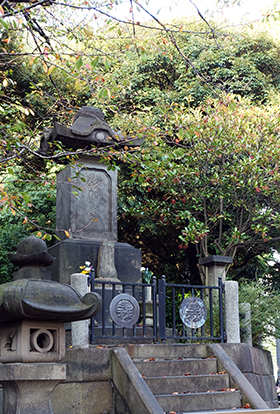
Graveyard of Shogitai (in Ueno Park)
By the way, since imperial princes or adopted children in the Imperial Family became chief priests of Kan-eiji Temple for generations, Prince Kitashirakawa Yoshihisa went to Edo and succeeded to the chief priest of Kan-eiji Temple and Rinnoji Monzeki as the 15th Prince Kogen Nyudo in 1867. After Prince Kogen Nyudo resigned as the chief priest when the Meiji Government was established, no member of the Imperial family has become the chief priest of Kan-eiji Temple.
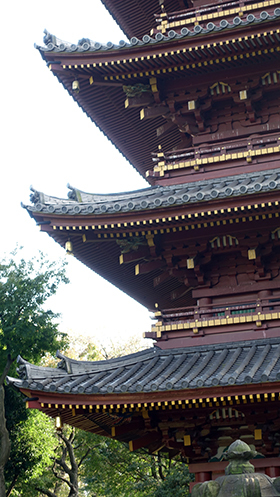
Five-storied pagoda of Kan-eiji Temple (in Ueno Zoo)
Although Kan-eiji Temple's precincts were confiscated by the Meiji Government after the Boshin Civil War, the main building of Kita-in Temple in Kawagoe, which was a house of Buddhist Priest Tenkai, was moved to the side where Daiji-in Temple, a branch temple of Kan-eiji Temple, previously stood, and Kan-eiji Temple's inner temple was rebuilt in 1875. By the way, Aoi-no-Ma, or a room of mallow, in which Yoshinobu Tokugawa was confined for two months in 1868, was in this Daiji-in Temple.
Q: When Ueno Park was developed, how was Kan-eiji Temple treated?
Most of Kan-eiji Temple's precincts were lost at that time, and the temple's presence was disregarded.
Q: Could you tell me about roles of branch temples of Kan-eiji Temple?
Chief priests of branch temples take turns to perform their duties in sub-temples that are managed by Kan-eiji Temple. Their roles have not changed.
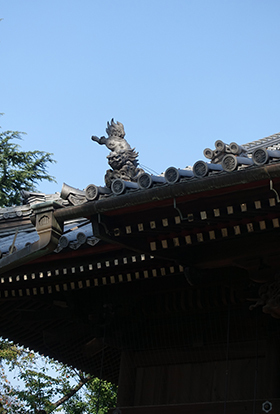
Kan-eiji Temple's inner temple

Ryoyu Miyabe, the chief priest of Kanshoin








